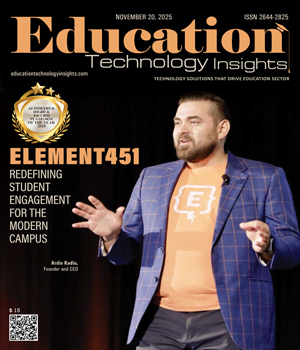THANK YOU FOR SUBSCRIBING
Be first to read the latest tech news, Industry Leader's Insights, and CIO interviews of medium and large enterprises exclusively from Education Technology Insights
Building Educational Institution with Technological Solutions
Derrick Brown, Sr Director Technology Operations and Interoperability, Portland Public Schools
 Derrick Brown, Sr Director Technology Operations and Interoperability, Portland Public Schools
Derrick Brown, Sr Director Technology Operations and Interoperability, Portland Public SchoolsDerrick Brown is a collaborative leader who thrives on doing what is best for the organization by leading with compassion, empathy, service, and support. Currently, he is serving as a senior Director of Technology Operations and Interoperability at Portland Public School. He is responsible for project management and PMO, customer service and end-user support, applications/software, cloud, hardware, and infrastructure. His leadership style is adaptive to changing business priorities and opportunities.
What are the challenges or pain points the public school districts face and how are you resolving those issues?
When the pandemic hit, students were forced to study from home and for that, they need a device to connect with the teacher. But in most school districts in Oregon, there are computers in classrooms but not every student had a device. Being the largest public school district in Oregon with nearly 45,000 students, COVID has exacerbated the situation. However, distributing devices to every student and purchasing as many devices using funds from the federal government was quite a challenge. Additionally, assisting students and teachers on how to maintain the devices and use remote learning tools to continue with the teaching and learning process during the pandemic was another task. Hence, we’ve tried to transform the digital infrastructure to offer innovative devices and tools for both the teachers and students so that the teaching structure becomes more effective and teachers can teach from anywhere freely and with flexibility, not being tethered to a desk. We’ve also provided cybersecurity and monitoring tools to ensure systems are connected wirelessly as virtual private networks and monitoring tools to send an alert in case of disruptions so we can remediate it immediately.
“Before working on tools, products or solutions and before implementing them, one must test them from top to toe”
While adopting these tools and techniques for the students and faculties, what are the technological and process elements you take to avoid any disruptions?
We act as the actual stakeholders with the teaching and learning department and work very closely with them. While adopting a new curriculum, testing is conducted with proper proof of concept on whether it fits into the instructional ecosystem and how seamless it is for teachers to use. We are actively present there, right from the beginning, reviewing and monitoring those tools so that it fits into our ecosystem. In the case of technological elements, we ensure that the technological tools that we use are not disruptive when implement to support classrooms.
Would you like to share a piece of advice with your fellow peers so they can improve in the space?
My advice would be before working on tools, products or solutions and before implementing them, one must test them from top to toe. The industry is looking for tested and proven products, tools and solutions that have worked with other school districts and want to implement those. As we are working with career technology and education teachers, they are facing real-world experiences. So, it provides our technology with an opportunity to learn, grow and partner with those teachers in order to provide them with the right tools to help students be prepared for the real world. Hence, any tools, products or solutions must be tested and have proof of concepts before implementing it by the users.
Secondly, the opinion of your peers matters. Having conversations and networking with peers can gain knowledge and insight about their own experiences and help in being updated in the industry.
Read Also
Goldilocks Regulation
Beyond the Quiz: Redefining Competence in eLearning
Beyond Theory and Into Monday Morning: Enhancing Graduate Programs for Teachers
Safeguarding Students in the Age of Deepfakes: An Educational Imperative
Delivering Excellence in Education through Transformative School Leadership
Curriculum Innovation for Student Success and Institutional Growth

I agree We use cookies on this website to enhance your user experience. By clicking any link on this page you are giving your consent for us to set cookies. More info






















